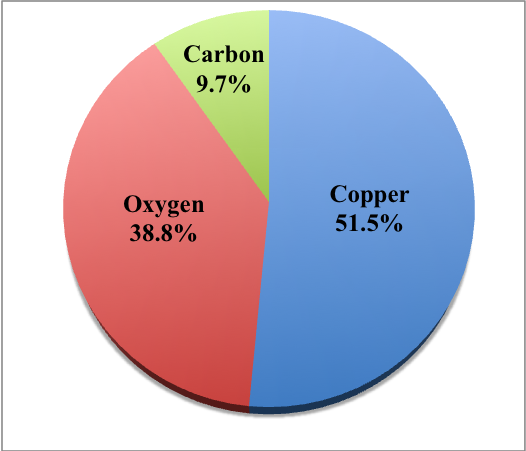| << Chapter < Page | Chapter >> Page > |


Other compounds show similar results. For example, every sample of the compound lead sulfide contains 86.7% lead and 13.3% sulfur by mass. This is true whether we take 1.00 g of lead sulfide or 1.00 kg of lead sulfide or any other total mass. We always get the same proportions of the masses of lead and sulfur in the sample.
This experimental observation is so consistent for the vast majority of all compounds that we regard it as a natural law , a summary of many, many observations that we therefore always expect to observe in future observations. In this case, the natural law we have observed is the Law of Definite Proportions :
Law of Definite Proportions: When two or more elements combine to form a compound, their masses in that compound are in a fixed and definite ratio.
This means that if we break a compound down into its elements and measure the masses of the elements that make it up, those masses are always in the same ratio.
We can illustrate this with a set of simple compounds each containing two of the elements of hydrogen, nitrogen, and oxygen. The definite ratios given by the Law of Definite Proportions are show in [link] for 100.0 g of each compound:
| Compound | Total Mass (g) | Mass of Hydrogen (g) | Mass of Nitrogen (g) | Mass of Oxygen (g) |
| Water | 100.0 | 11.2 | - | 88.8 |
| Ammonia | 100.0 | 17.7 | 82.3 | - |
| Nitric Oxide | 100.0 | - | 46.7 | 53.3 |
Do these fixed masses mean that we are combining tiny particles of fixed mass together to form these compounds? To test this hypothesis, let’s look at these numbers more closely to see if we can make any sense of them. One way to look at these data is to imagine taking a sample of water that contains exactly 1.00 g of hydrogen, and also a sample of ammonia that contains exactly 1.00 g of hydrogen. If we do this, the data now look as shown in the first two lines of [link] .
| Compound | Total Mass (g) | Mass of Hydrogen (g) | Mass of Nitrogen (g) | Mass of Oxygen (g) |
| Water | 8.93 | 1.00 | - | 7.93 |
| Ammonia | 5.65 | 1.00 | 4.65 | - |
| Nitric Oxide | 2.14 | - | 1.00 | 1.14 |
Looking at the data this way allows us to compare how a fixed amount of hydrogen combines with either nitrogen or oxygen. From the Law of Definite Proportions, we know we will always get the fixed mass ratios shown in [link] . We might imagine that this means that water is formed from 1 atom of hydrogen and 1 atom of oxygen, and that therefore the mass of 1 atom of oxygen is 7.93 times greater than the mass of 1 atom of hydrogen. If this is true, then ammonia might also be formed from 1 atom of hydrogen and 1 atom of nitrogen, in which case 1 atom of nitrogen has a mass 4.65 times greater than 1 atom of hydrogen.
This all seems consistent with the idea that these elements are made up of atoms combining in one-to-one ratios. But now we find a problem: if an atom of oxygen is 7.93 times as massive as an atom of hydrogen and if an atom of nitrogen is 4.65 times as massive as an atom of hydrogen, then it must be that an atom of oxygen is more massive than an atom of nitrogen by the ratio of 7.93/4.65 = 1.70. When we now look at the third row of [link] , the data tell us if nitric oxide is made up 1 atom of nitrogen and 1 atom of oxygen, an oxygen atom has a mass 1.14 times greater than the mass of a nitrogen. Our numbers and our conclusion aren’t consistent with the experimental data, so we must have made an incorrect assumption.

Notification Switch
Would you like to follow the 'Concept development studies in chemistry 2013' conversation and receive update notifications?